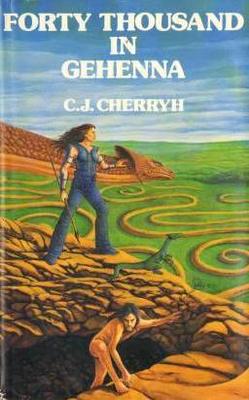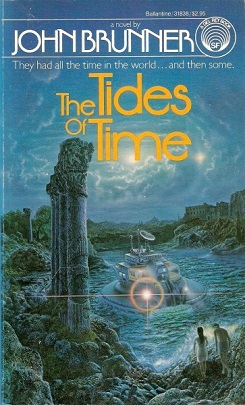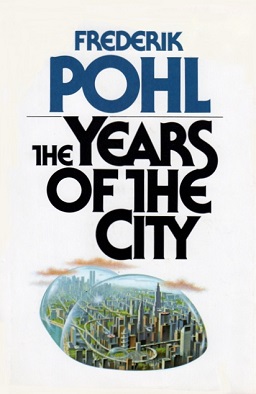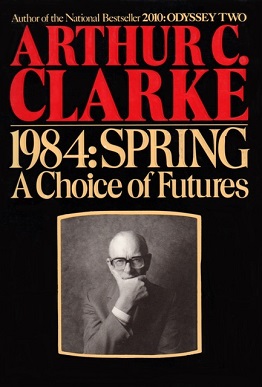
Foundation's Edge (1982) is a science fiction novel by American writer Isaac Asimov, the fourth book in the Foundation Series. It was written more than thirty years after the stories of the original Foundation trilogy, due to years of pressure by fans and editors on Asimov to write another, and, according to Asimov himself, the amount of the payment offered by the publisher. It was his first novel to ever land on The New York Times best-seller list, after 262 books and 44 years of writing.

The Memory of Whiteness is a science fiction novel written by Kim Stanley Robinson and published in September 1985. It shares with the Mars trilogy a focus on human colonization of the Solar System and depicts a grand tour that travels from the outer planets inward toward the Sun, visiting many human colonies along the way. The different human societies on the various planets and planetoids visited are depicted in detail. The purpose of the tour is to stage concerts by the "Holywelkin Orchestra", a futuristic musical instrument played by a selected master. Readers follow the Orchestra and its entourage together with a journalist, who after some time detects a conspiracy that seems to be connected with a group of gray-clad, sun-worshipping monks. The tour ends near the planet Mercury in a solar station belonging to these "Grays", which controls the white line energy source for the whole Solar System.

The Lazarus Effect (1983) is the third science fiction novel set in the Destination: Void universe by the American author Frank Herbert and poet Bill Ransom. It takes place some time after the events in The Jesus Incident (1979).
Valentine Pontifex is a novel by Robert Silverberg published in 1983.

Winter in Eden is a 1986 science fiction novel by American author Harry Harrison, the second in the Eden series.

Forty Thousand in Gehenna, alternately 40,000 in Gehenna, is a 1983 science fiction novel by American writer C. J. Cherryh. It is set in her Alliance-Union universe between 2354 and 2658, and is one of the few works in that universe to portray the Union side; other exceptions include Cyteen (1988) and Regenesis (2009).

Across the Sea of Suns is a 1984 hard science fiction novel by American writer Gregory Benford. It is the second novel in his Galactic Center Saga, and continues to follow the scientist Nigel Walmsley, who encountered an extraterrestrial machine in the previous book, In the Ocean of Night, aboard an expeditionary spacecraft, searching for life. Eventually Nigel discovers evidence of the major conflict in the galaxy.

Software is a 1982 cyberpunk science fiction novel written by Rudy Rucker. It won the first Philip K. Dick Award in 1983. The novel is the first book in Rucker's Ware Tetralogy, and was followed by a sequel, Wetware, in 1988.

Science Fiction: The 100 Best Novels, An English-Language Selection, 1949–1984 is a nonfiction book by David Pringle, published by Xanadu in 1985 with a foreword by Michael Moorcock. Primarily, the book comprises 100 short essays on the selected works, covered in order of publication, without any ranking. It is considered an important critical summary of the science fiction field.

Black Star Rising, published in 1986, is a dystopian science fiction novel by American author Frederik Pohl. It is about a post-nuclear war future in which a conquered United States becomes a Chinese farming colony. The main character is an American who the Chinese send to meet a race of warlike aliens who come to Earth.

The Tides of Time (ISBN 0-345-31838-2) is a science fiction novel by John Brunner. It was first published in the United States by Ballantine Del Rey Books in 1984. The novel tells the story of two people on an isolated island, each time they awoke from sleep, they lived a different life in a different time.
A Theatre of Timesmiths is a science fiction novel by British writer Garry Kilworth, first published in 1984.
Castles is a book by David Day, David Larkin, and Alan Lee published in 1984.

The Book of the Stars is a novel by Ian Watson published in 1984.

The Years of the City is a novel by Frederik Pohl published in 1984.

1984: Spring / A Choice of Futures is a book by Arthur C. Clarke published in 1984.
Welcome, Chaos is a novel by Kate Wilhelm published in 1983.
Cards of Grief is a novel by Jane Yolen published in 1984.
Dinner at Deviant's Palace is a novel by Tim Powers published in 1985.
Green Eyes is a novel by Lucius Shepard published in 1984.













